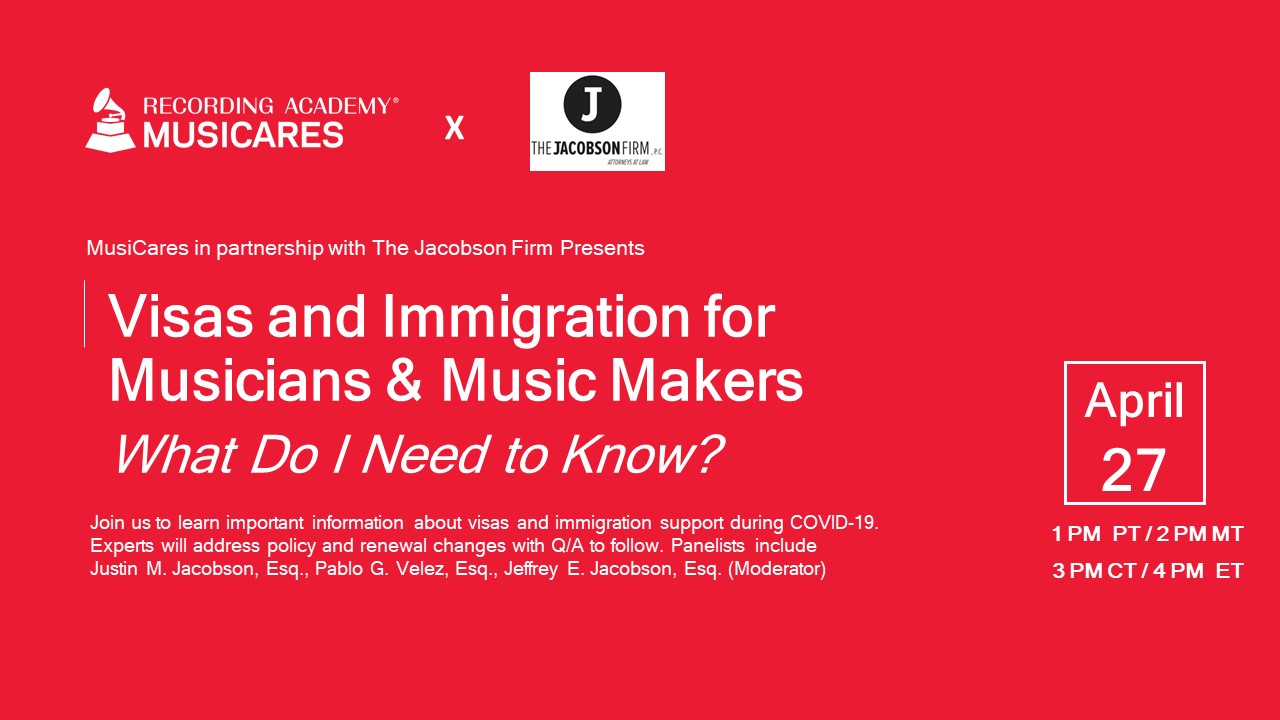The Artist & Record Label Relationship – A Look At A Standard “Record Deal”
By Justin M. Jacobson, Esq.
In our prior installment, we examined the artist and manager relationship and explored a variety of standard clauses as well as negotiations tactics. We now start our initial examination of a few selected clauses from a standard recording industry agreement, better known as a “record deal.”
Once a musician has finished its product (music), the music is then distributed to the public for sale, either physically (CDs, vinyl), digitally (MP3 downloads, internet streams) or in both formats. Distribution is generally handled by a third-party on behalf of the artist unless the artist independently distributes their own music themselves. If an artist utilizes a third-party distributor, one of the industry’s most dominant distributors of recorded music is the recording or “record” label. These companies dispense the musician’s recorded music through a variety of channels, including to “Big Box” Retailers such as Best Buy and Target. Record labels are also involved in digital distribution by providing the work as digital downloads (MP3 format) in digital stores such as iTunes Store and on digital music streaming platforms, such as Spotify and Pandora.
Today’s recording industry landscape has significantly changed from its earlier roots, with many of the older, independent labels being sold and merged into each other. For instance, there are still a variety of major recording labels, such as Capitol Records, Columbia Records, Interscope Records and Atlantic Records; however, most of these are owned by other larger entertainment entities such as Warner Music Group, Universal Music Group or Sony Music Entertainment. In addition, many major labels have also established “vanity” labels. These act as smaller distribution companies where a producer or an artist signs additional artists or producers to this imprint and the “vanity” label then is dispensed to the public by a larger entertainment entity. For example, “Cash Money Records” is a “vanity” label distributed by Republic Records, which is under the Universal Music Group umbrella. There are also a variety of independently owned record labels such Sub Pop Records, Epitaph Records and Norton Records, who operate and distribute works on their own. In addition, there has been a recent rise in “digital only” record labels that function like traditional record labels; but, solely distribute music digitally.
Once an artist selects the appropriate distribution entity, it is standard practice for the parties to enter into an agreement outlining the deal points. To better comprehend this contractual relationship, let us now review a series of common clauses included in many standard record label agreements.
Similar to management agreements, the “term” or length of the agreement is of paramount importance.
TERM – (a) The Term will consist of an initial contract period (“First Contract Period”) and each of the renewal contract periods (“Contract Periods”) for which we will have exercised the options set forth in the next sentence. LABEL will have three (3) separate and successive irrevocable options, each to extend the Term for a further Contract Period. Each option to extend the Term for an additional Contract Period will be exercised automatically. The second Contract Period will be called the “Second Contract Period,” the third Contract Period will be called the “Third Contract Period” and the fourth Contract Period will be called the “Fourth Contract Period”.
(b) The First Contract Period will commence upon the date of Execution and will continue through the later of:
(i) The date twelve (12) months from the date hereof; or
(ii) The date six (6) months after the last day of the month in which Record Label commercially releases the Album made in fulfillment of the Recording Commitment for the first Contract Period in the United States.
(c) Each subsequent Contract Period will run consecutively, commencing upon the expiration of the immediately preceding Contract Period, and will continue through the later of:
(i) The date twelve (12) months from the commencement of the particular Contract Period; or
(ii) The date six (6) months after the last day of the month in which Company commercially releases the Album made in fulfillment of the Recording Commitment for the first Contract Period in the United States.
This language states that the record label shall have one “firm” or “committed” album release with the “option” for up to three additional albums, totaling a potential four album deal. As it is written, these options are in the label’s sole discretion. In addition, this provision means that the agreement shall commence upon signing and shall end at either the expiration of one year from the signing of the agreement or six months after the last commercially released album. It also states that any subsequent option shall run for a similar period of time.
Since most record distribution deals contain similar language, an artist can attempt to negotiate specific parameters that are required in order for the record label to exercise one of its options. For instance, an artist could provide language that affords the label with the right to exercise an option for an additional album if the prior album reaches a specified sales figure (i.e., selling 20,000 copies of an album) or if the release recoups a certain specified percentage of an advance provided to the artist by the label (i.e., 75% of the preceding advance was recouped).
Once the “term” of an agreement is established, another important clause to decipher is the definition of what constitutes “delivery” of an “album” to satisfy an artist’s “recording commitment.”
Delivery Requirement -During each Contract Period, Label will cause the Artist to record and Artist will Deliver to Label Masters sufficient to constitute one (1) Album (the “Recording Commitment”). An “album” shall consist of approximately twelve (12) tracks with a total duration of approximately seventy five (75) minutes (the “Album”). In order for an Album to be “Delivered” under this Agreement, it must be contained in such format of which the Label advises the Artist, in the proper form for the production of the parts necessary for the manufacture of commercial Records, which shall be delivered to Label together with all materials, clearances, consents, approvals, licenses and permissions necessary to commercially release the applicable album. Each Album shall be subject to the Label’s approval as being technically and commercially satisfactory.
Further, unless Label otherwise expressly consents in writing, Artist will ensure that the Artist does not record Performances in fulfillment of the Recording Commitment that are: (1) not recorded in a recording studio (i.e., “In Concert” or “Live” performances); (2) instrumental Performances; (3) solely speech or spoken word; (4) not in the English language; (5) remixed or re-edited or mixes (e.g., extended mixes of an Album Master) or otherwise altered versions of Performances previously recorded; (6) based on an overall theme (e.g., a Christmas Album); or, (7) Performances of more than one Composition (e.g., a medley).
Under a recording agreement, the “delivery” of an album is an important point of contention between the label and artist. For instance, traditional language, such as in the clause above, requires that any album submitted to the record label must be both “technically” and “commercially” satisfactory to constitute a “delivered” album under an artist’s “album commitment.” An album is “technically” satisfactory when the master that is technically well-made and able to be utilized to manufacture CDs, records, etc. This is fairly easy to satisfy, as any track that was recorded, mixed and mastered at a reputable recording studio or by a reputable professional, should suffice. Conversely, an album is only “commercially” satisfactory, if and only if, the label believes the album will sell. This means that the album is “satisfactory for commercial exploitation,” which is highly subjective. In negotiating this clause, an artist could try to limit the satisfaction of the “delivery” with an album that is “technically” satisfactory as opposed to one that is both “technically” and “commercially” satisfactory. This is especially important in emerging musical genres, such as electronic-dance music, where there are often quick and unpredictable listenership shifts whereby an artist or a type of musical genre which was once highly marketable is now no longer. If the label rejects an artist’s delivery of an album, it prevents any additional progress within the contract, such as the issuance of additional monetary advances. This situation may also arise where an artist is signed to a record label and then takes several months to finalize their album. If during this time period, the entire musical landscape shifts, the artist’s music may become outdated and not commercially satisfactory to the label, who feels they can now no longer sell this material.
In addition, the above clause defines one “album” as approximately twelve songs totaling seventy-five minutes; however, there are a variety of recordings that do not constitute a “track” sufficient to count toward an artist’s “album commitment” to the record label. For example, the language above states a “live” recorded performance does not constitute an acceptable track unless the record label permits it. Furthermore, a track that is solely instrumental or solely acapella will not count unless the label says so. Additionally, any foreign language tracks, remixes of original tracks or “theme” tracks, such as a Christmas or holiday album, will not count without approval from the label. An artist can always attempt to negotiate that a particular “live” version of a track counts toward the “album;” but, ultimately, the label may not agree or may only agree to allow this one particular track as opposed to removing the restriction entirely.
Another essential clause in a standard recording contract is the “advance” or “advance of recording funds” section. The negotiation of this paragraph has the potential to severely impact an artist’s career as this is the “money” the artist gets for signing the deal and are the funds the musician has available to actually record and finalize their album.
Advances/Recording Funds: Label will provide to Artist the following Recording Funds (inclusive of all producer advances and recording costs), which shall be recoupable from any and all royalties and any other agreements between the parties hereto. “Any other agreement,” in this paragraph, means any other agreement with Label relating to Artist’s Recordings or relating to Artist as a recording artist or as a producer of Recordings of Artist’s own performances.
(a) “Recording fund” advances for the Albums shall be subject to the following “minimums” and “maximums”:
Album Minimum Maximum
Album 1 $ 50,000
Album 2 $ 55,000 $ 60,000
Album 3 $ 60,000 $ 75,000
Album 4 $ 70,000 $ 85,000
(b) No respective recording fund shall exceed the “maximum funds” set forth in Paragraph(a). If the Artist fails to earn an amount which is the equivalent of one hundred (100%) percent of the proceeding “Recording Fund” advance as earned artist royalties in respect of sales of royalty bearing units through normal retail channels in the United States of the immediately prior Album, then the “Minimum” amount listed in Paragraph(a) shall be provided to Artist by Label. If the Artist earns an amount which is the equivalent of at least one hundred (100%) percent of the proceeding “Recording Fund” advance as earned artist royalties in respect of sales of royalty bearing units through normal retail channels in the United States of the immediately prior Album, then the “Maximum” amount listed in Paragraph(a) shall be provided to Artist by Label.
(c) Label shall pay Artist one-half (1/2) of each Recording Fund advance listed in Paragraph(a) hereunder upon commencement of recording for each respective Album. The balance of each respective recording fund advance will be payable to Artist within thirty (30) days of the technically and commercially satisfactory delivery of each completed Album to Label.
As it is stated above, each album released by the label coincides with an additional “advance” of recording costs so that the artist may complete its album obligation to the label. Typically, most labels want approval over the recording budget; and, if any money remains from the recording funds after paying all the associated recording, mixing, editing and mastering costs, the artist gets it. If the musician requires additional funds to record and finalize the album, the artist must usually go into their own pocket to pay the difference. However, in select situations, the label may choose to pay the difference; and, in those instances, the label treats the additional payment as an additional recoupable advance. This situation could arise when there is no other way for the artist to obtain the funds to finish the album; and, the label would rather accept a finished album that costs a bit more than originally budgeted for than an unmarketable, unfinished album. The “minimum” amount listed above is known as the “floor.” As the above clause states, if an artist fails to fully recoup their entire prior advance from the label, they will only receive the “minimum” amount listed for their next album. Conversely, the “maximum” listed above is known as the “ceiling.” This is the highest amount that the label will provide to the artist for their next album no matter how good the prior albums sales were. As the proceeding clause states, if an artist does fully recoup their prior advance, they will receive the “maximum” amount listed for their next album.
In most instances, any advance provided by the label to an artist is fully recoupable from the royalties earned on the material. This means that after the label advances a specified amount to the artist, the label keeps any and all royalties earned by the artist for the recordings until the original amount is paid back. This is further exemplified as most clauses state that the amounts subject to recoupment by the label include “all amounts paid to you or on your behalf, or otherwise paid in connection with this agreement.” Thus, all the expenses the label pays including, to name a few, any recording costs, music video production costs, studio session players and marketing and promotions for the album. They are generally all recouped prior to the artist receiving any additional monies. This is why the actual “minimums” and “maximum” are subject to extensive negotiations, since the amount the artist initially takes subsequently impacts what they will receive in the future, if anything.
The royalties earned by an artist under this agreement and in most standard ones are typically subject to cross-collateralization. This means that any monies advanced by the label “under this or any other agreement between the parties” shall be recouped from any and all streams of income that the label is entitled to. For instance, if the label has a publishing deal with the artist, the recording company could recoup the funds it advanced to create an album from the artist’s publishing monies. Similarly, if an ancillary income arrangement exists with the artist, the label could potentially recoup the funds it advanced to create the recorded music from the artist’s touring monies or from the artist’s merchandise sales, or any other income that is included in the agreement with the artist. Conversely, an agreement that is not cross-collateralized permits the label to only recoup the funds it advanced for the creation of recorded music from the funds earned from the sale of the music instead of the label recouping the funds of any potential stream of income the label is entitled to. Ideally, an artist should attempt to negotiate that the agreement not be cross-collateralized; but, this may be a hard bargaining point, as the label may insist on cross-collateralizing any income earned to reimburse itself for the costs it has already advanced to the talent.
In addition, it is a common industry practice that in most every recording deal that an advance is non-returnable. Therefore, there is no need for the artist to re-pay the money provided to the artist by the record label. This is true even if the artist ends up “flopping” and never recouping the original advance amount from the royalties it earns from the sale of its music.
Once the artist and distributor agree on the advances and what constitutes “delivery” to satisfy an artist’s commitment, the negotiation of the actual royalty rate earned for each sale is next.
ROYALTIES – (1.) Artist shall accrue to your royalty account, in accordance with the provisions of this Agreement, as described below; provided, however, no royalties shall be due and payable to you until such time as all Advances have been recouped by or repaid to Label. Royalties shall be computed by applying the applicable royalty percentage rate specified below to the applicable “Royalty Base Price” in respect of the “Net Sales of Records” described in this paragraph. Label shall pay to Artist all-in royalties (i.e., inclusive of producer and artist royalties). The term “Net Sales of Record” shall mean all gross income actually paid to Label in connection with its exploitation of such Album less all expenses (excluding overhead only) paid or incurred by Label in connection with the exploitation, manufacture, sale, advertising, promotion and marketing of such Album.
(2.) (a) The royalty rate (the “Basic U.S. Rate”) in respect of Net Sales of Records of the Album made hereunder made during the respective Contract Periods specified above and sold by Label through Normal Retail Channels in the United States (“USNRC Net Sales”) shall be as follows:
CONTRACT PERIODS BASIC U.S. RATES
Albums in first and second 12%
Contract Periods
Albums in third and fourth 14%
Contract Periods
Albums in fifth and sixth 16%
Contract Periods
(b) The royalty rate (the “Escalated U.S. Rate”) in respect of USNRC Net Sales of each Album recorded pursuant to your Recording Commitment in excess of the following number of units, shall be the applicable rate set forth below rather than the otherwise applicable Basic U.S. Rate:
CONTRACT PERIODS UNITS ESCALATED RATES UNITS ESCALATED RATES
Albums in first and second
Contract Periods 500,000 units 13% 1,000,000 units 14%
Albums in third and fourth
Contract Periods 500,000 units 16% 1,000,000 units 17%
Albums in fifth and sixth
Contract Periods 500,000 units 17% 1,000,000 units 19%
As the above clause mentions, the royalty that an artist earns for the sale of their music is calculated as a percentage of either the “Published Price to Dealer (PPD)” or the “Suggested Retail List Price (SRLP).” The “SRLP” is the approximate price charged by the retailer, such as Wal-Mart; while, the “PPD” is the approximate price that distributors charge to the retailers (wholesale unit price). It is prudent for an artist to attempt to negotiate for the highest possible royalty rate they could receive, as the higher the rate, the sooner they recoup the amounts advanced and the sooner the artist will begin receiving funds again.
In addition to agreeing upon the royalty rate and what the rate is based on (“PPD” or “SRLP”), similar to the clauses above, an artist can create royalty rate “escalators” based on album sales. As described above, when an artist sells 500,000 units (R.I.A.A. certified gold) or 1,000,000 units (R.I.A.A. certified platinum), the royalty rate escalates or “rises.” This increases the royalty rate that the artist is entitled to. An artist should also be cognizant of whether the royalty rate escalators are “prospective” or “retroactive.” A “prospective” escalator is one that only applies to sales going forward after a specified sales level is reached. This means that the artist’s royalty rate only is increased for any albums sold after they reach the listed sales level, for example, unit 500,001 is paid at the higher royalty rate. Conversely, and what is the ideal scenario for the artist, is “retroactive” escalation. This means that once the artist reaches a specified sales level (i.e. 500,000 copy sold), the royalty rate is increased to the higher rate for all the albums sold prior (1-499,999 copies sold) as well as those going forward (500,001+ copies sold). An artist should also be aware that any “free goods” or albums given away for “promotional use” do not count as royalty bearing sales as no royalty or money is earned in these instances.
As in the example listed above, most royalties are considered “all-in.” This means that the artist is responsible for paying the producer of the track from the amounts they receive from the label. For example, if the artist is entitled to a 15% royalty rate from the label and the artist entered into a production arrangement with the producer providing him with a 3% royalty rate, the artist must provide the producer with the 3% royalty from the royalty the artist is entitled to. Thus, the 15% royalty rate paid to the artist by the label is split with the artist receiving 12% after the artist pays the producer their 3% royalty from these funds.
Once the royalty rate is set, the examination of the “reserve against returns” clause is necessary.
Reserve Against Returns – Label shall have the right to establish, during each semi-annual accounting period, a royalty reserve against anticipated returns and credits, of up to twenty-five (25%) percent of the royalty earnings associated with the units of each Record reported as distributed to its customers in that period. Each royalty reserve shall be liquidated equally and in full over the four (4) semi-annual accounting periods following the accounting period during which the applicable reserve is originally established.
While the above clause has begun to become obsolete in most instances, it is still important to examine and understand. The “reserve against returns” specifically applies to any physical record music as there is currently no way to “return” a digital downloaded MP3. This means that the label shall “reserve” or set aside a specified portion of the royalties the musician would otherwise be entitled to in case of any “returns” or “credits.” For instance, in the example above, the label shall reserve twenty-five percent of the royalties the artist is entitled to in case any retailers must provide any refunds to its customer, which the label must in turn refund to the retailer. After a specified period of time, the “reserve” funds are “liquidated,” thereby, releasing the royalties to the artist. The frequency of “liquidation” is determined in the contract. As the above clause states, the reserves will be liquidated in “four” accountings, meaning every semi-annual accounting period. An artist should try to negotiate for a lower reserve percentage as well as a more frequent liquidation to earn as much of their royalties as quickly as they can.
Finally, one more clause that is included in many recording agreements is one that addresses the artist’s non-musical obligations, such as publicity and marketing for the released album.
Publicity – As Label reasonably requests, Artist shall appear for photography, poster, cover art, and the like, under the direction of Label or Label’s designees and to appear for interviews with representatives of the media and Label’s publicity personnel, at Label’s expense. As Label reasonably requests, Artist shall perform for the recording of brief audio, visual, and/or audiovisual spoken-word recorded messages and fan greetings suitable for use on and in connection with digital products and services and/or digital media platforms (e.g., Internet and wireless). In addition, as Label reasonably requests, Artist shall perform audiovisual works (e.g., so-called “B-roll” and “behind-the-scenes” footage) suitable for use on and in connection with Records embodying the Artist’s performances.
As the clause above outlines, the artist has to make themselves available for any public appearance, audio or audio-visual fan greeting or other audio-visual work as requested by the label. This is fairly common and in most instances, the artist will not receive any additional compensation for these services. However, an artist should try to negotiate for some of their expenses to be covered, such as transportation and/or meals, especially if the artist is required to travel further than a specified distance from the musician’s home.
Overall, the artist and label relationship is one of the most important ones and the next step in an artist’s quest for stardom. Since these agreements typically span many years and many albums, it is prudent that an artist fully understand the contract they are signing and ensuring they enter into an arrangement that works for them as this could be the document that makes or breaks an artist’s entire musical career.
This article is not intended as legal advice, as an attorney specializing in the field should be consulted. Some of the clauses have been condensed and/or edited for content purposes, so none of these clauses should be used verbatim nor do they act as any form of legal advice or counseling. We are also aware of the importance of streaming recordings; but, we will need to leave that for another day.
This article was originally published on TuneCore as part 1 and part 2.
© 2017 The Jacobson Firm, P.C.

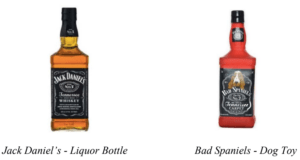
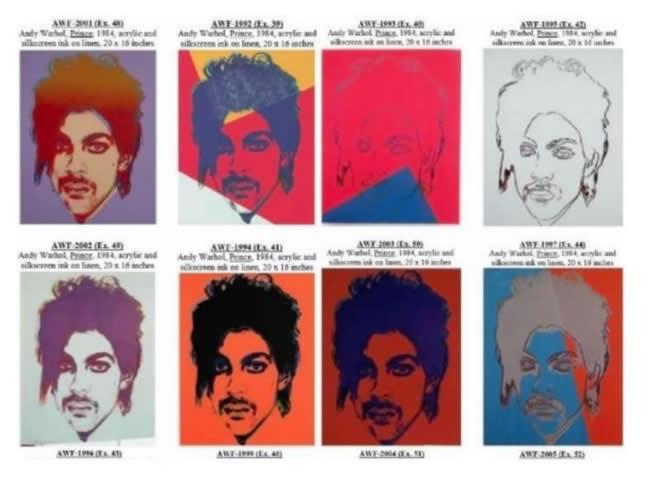
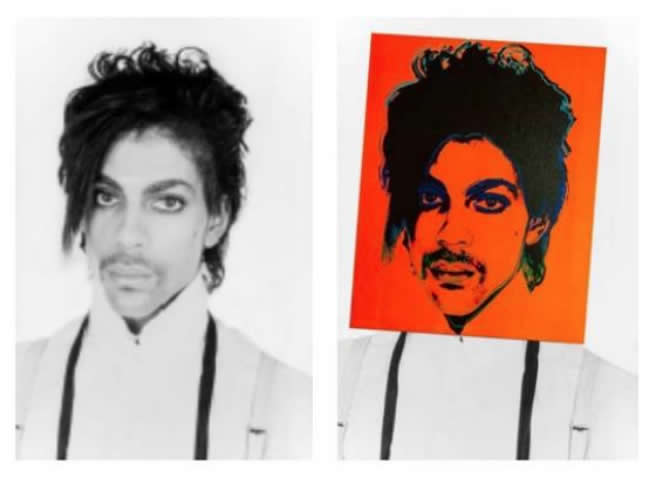




 On January 26, 2022, the fourth episode of "
On January 26, 2022, the fourth episode of " On January 12, 2022, the third episode of "
On January 12, 2022, the third episode of "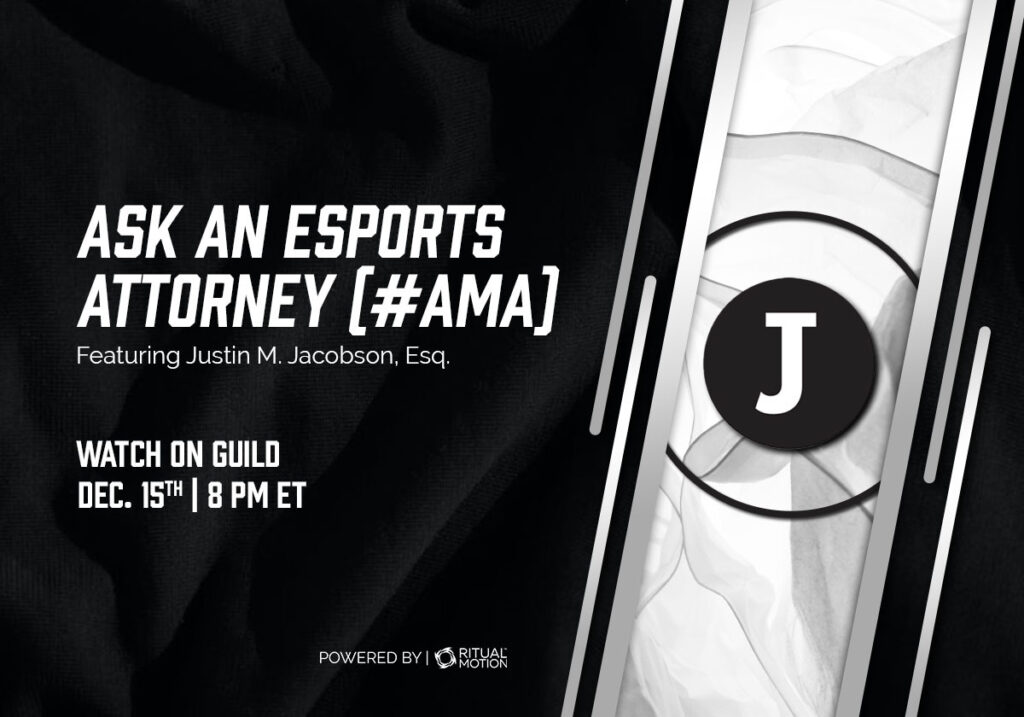 On December 15, 2021, the second episode of "
On December 15, 2021, the second episode of "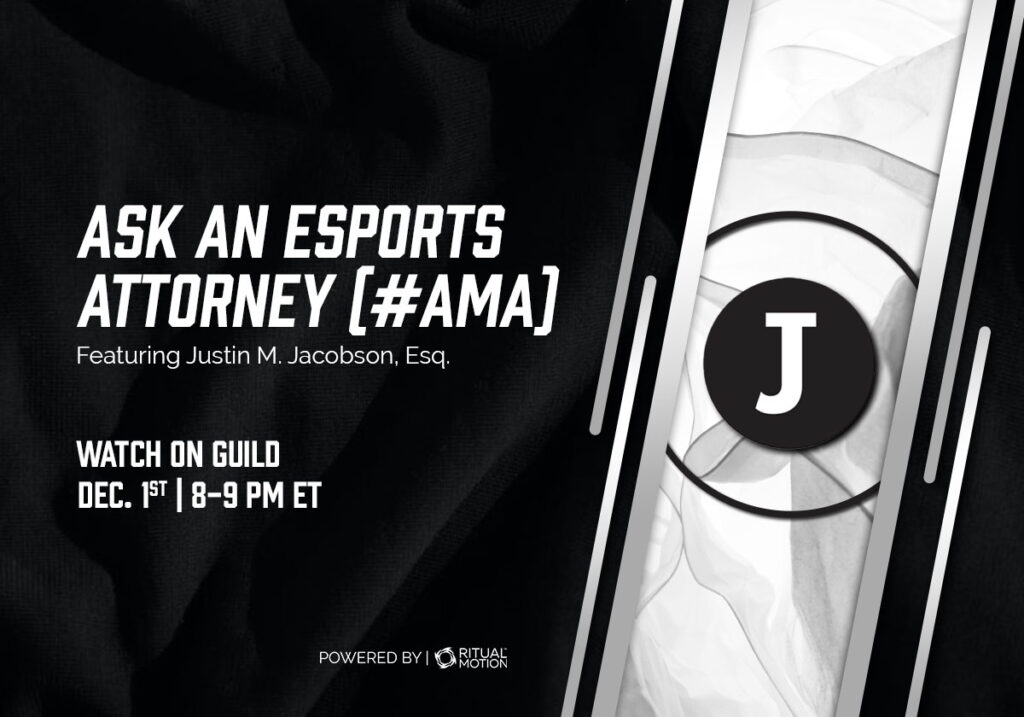 On December 1, 2021, the first episode of "
On December 1, 2021, the first episode of " On August 9, 2021, The #EsportsBizShow aired on
On August 9, 2021, The #EsportsBizShow aired on 



 On June 16, 2021,
On June 16, 2021, 
